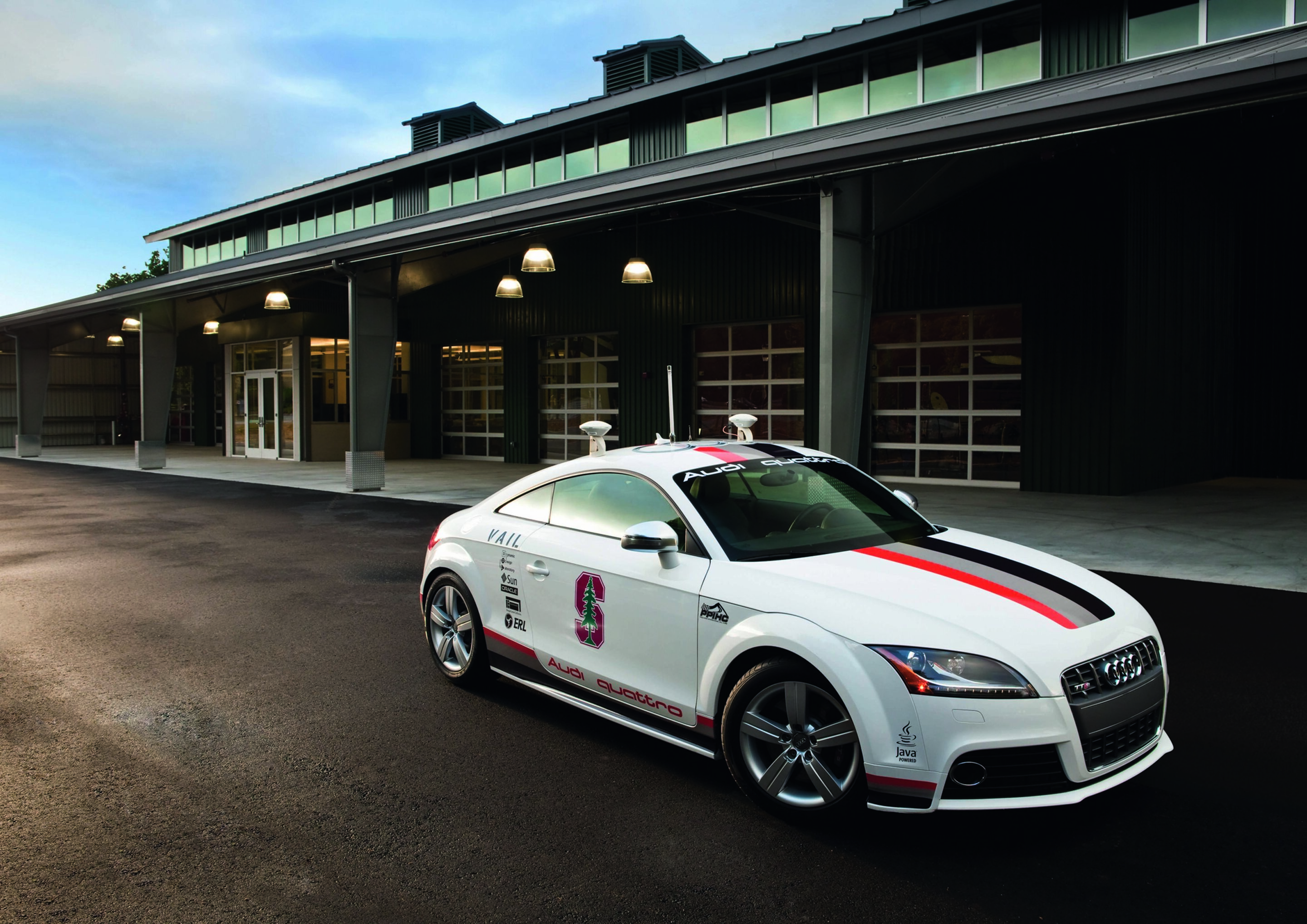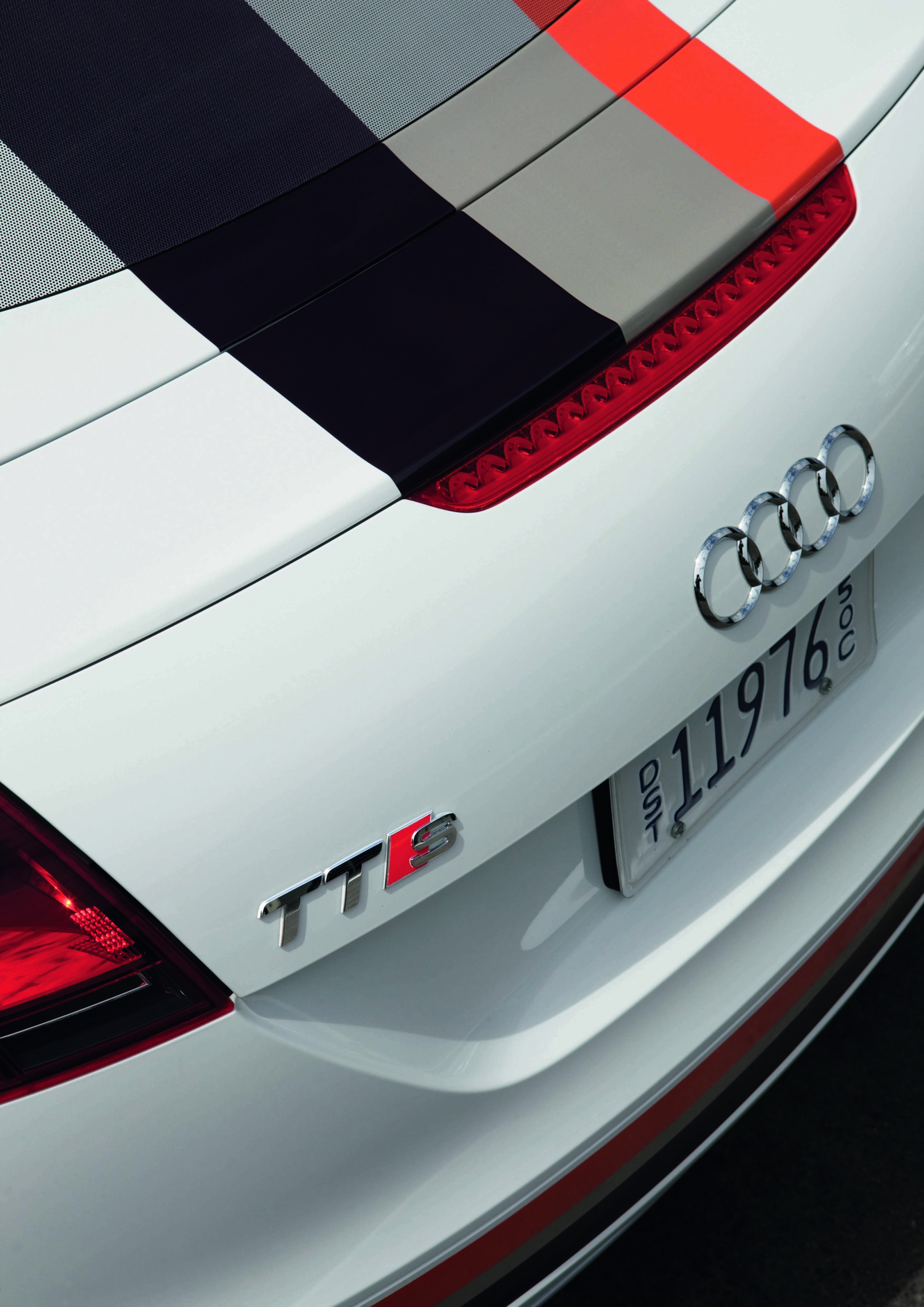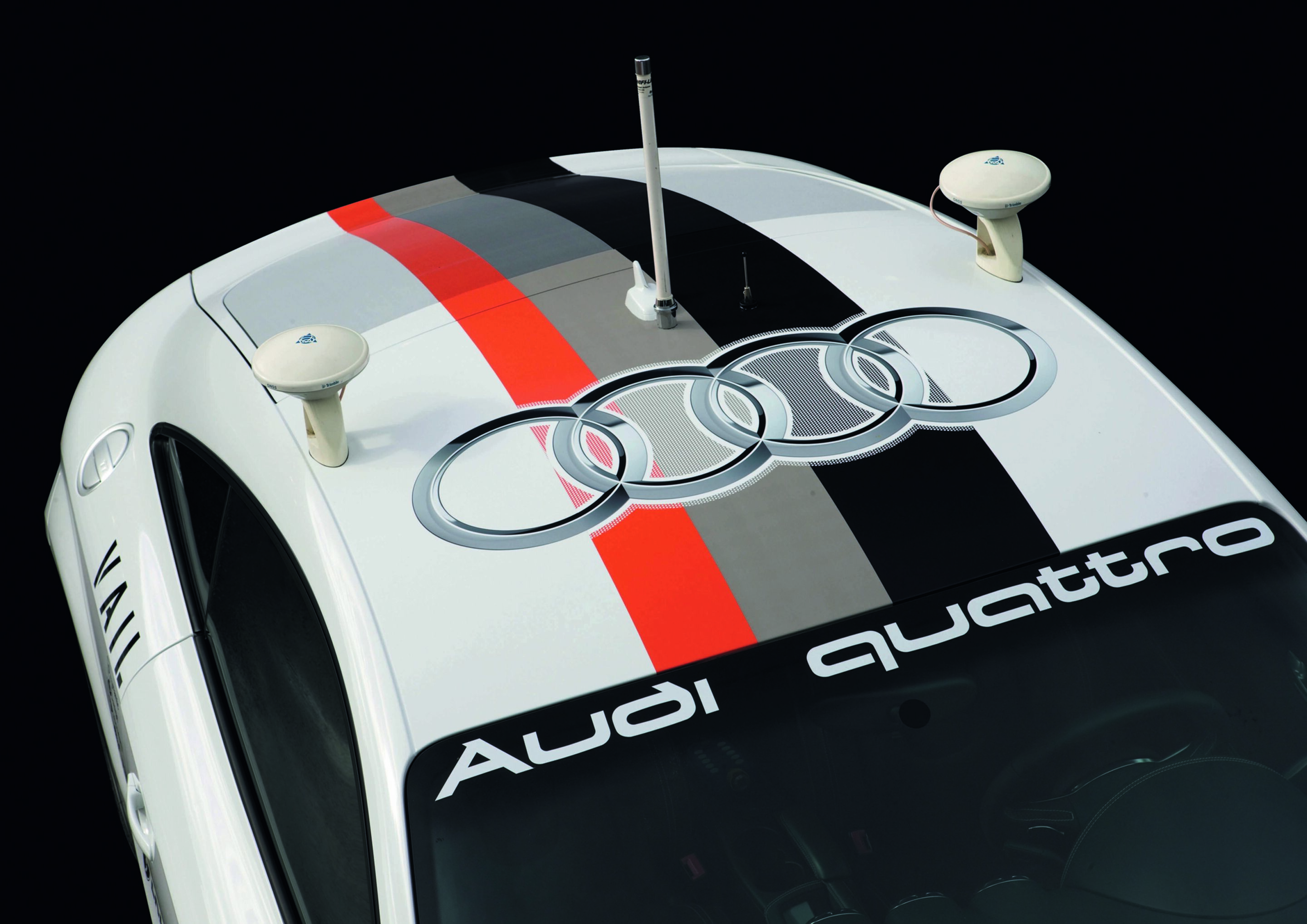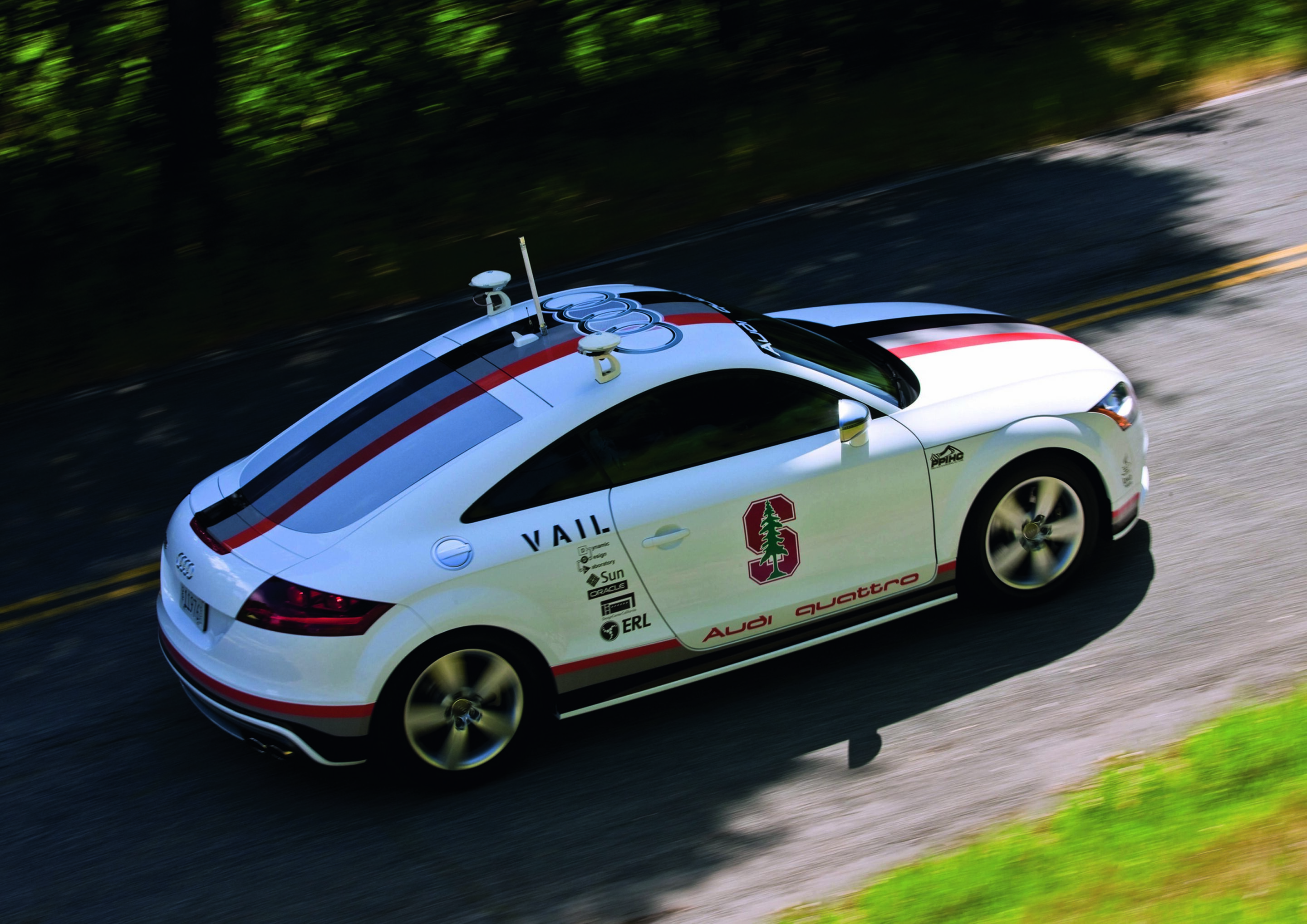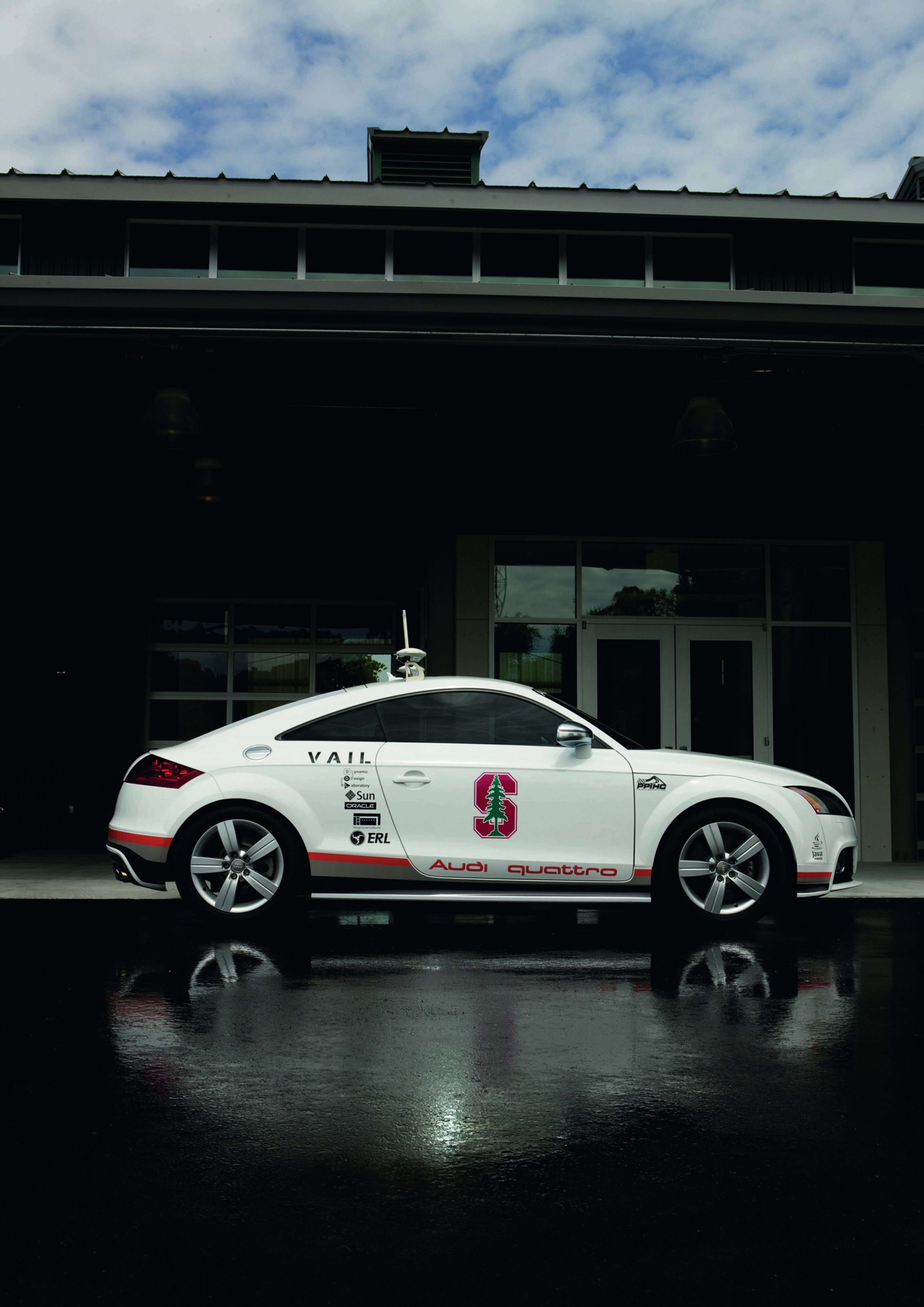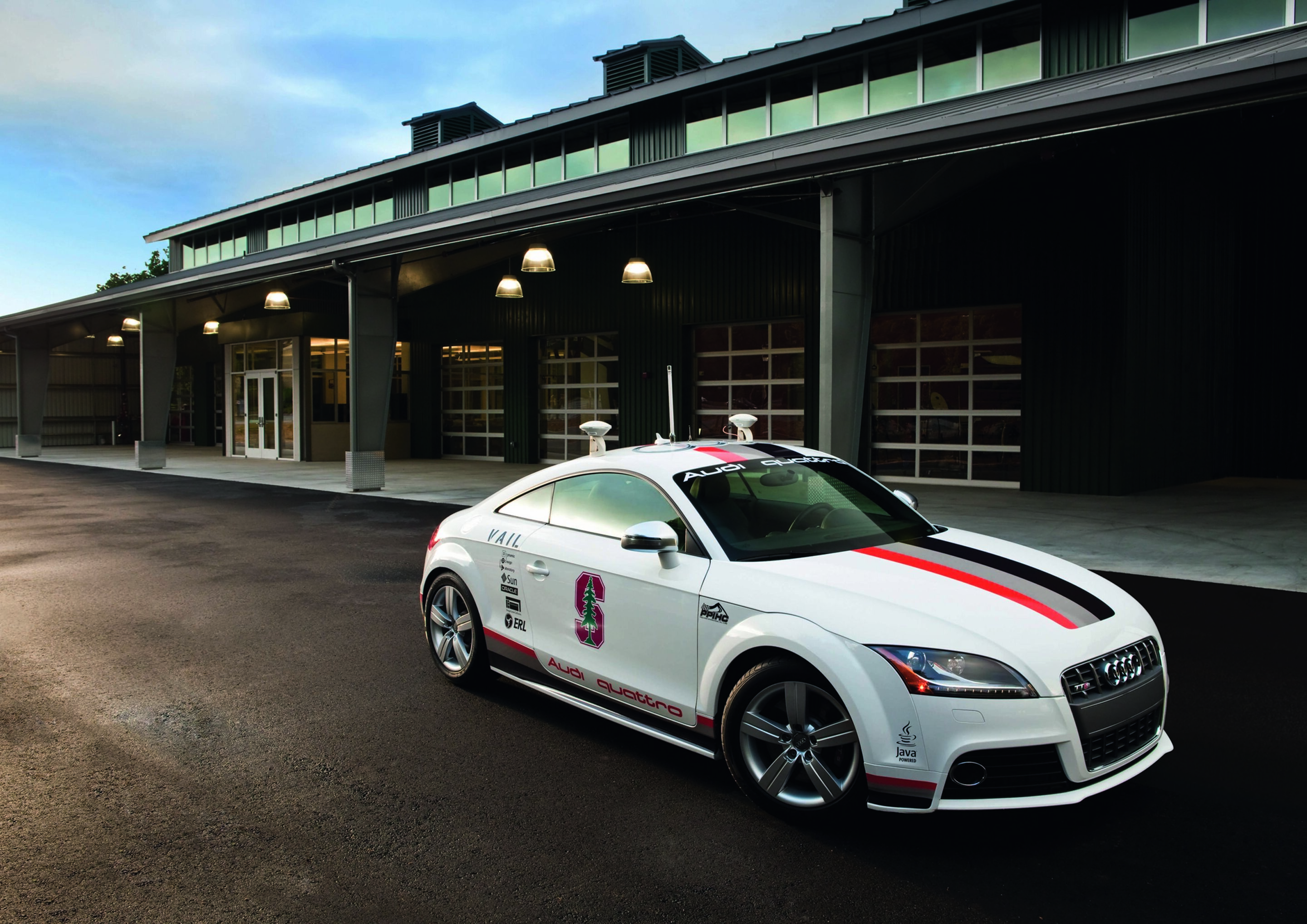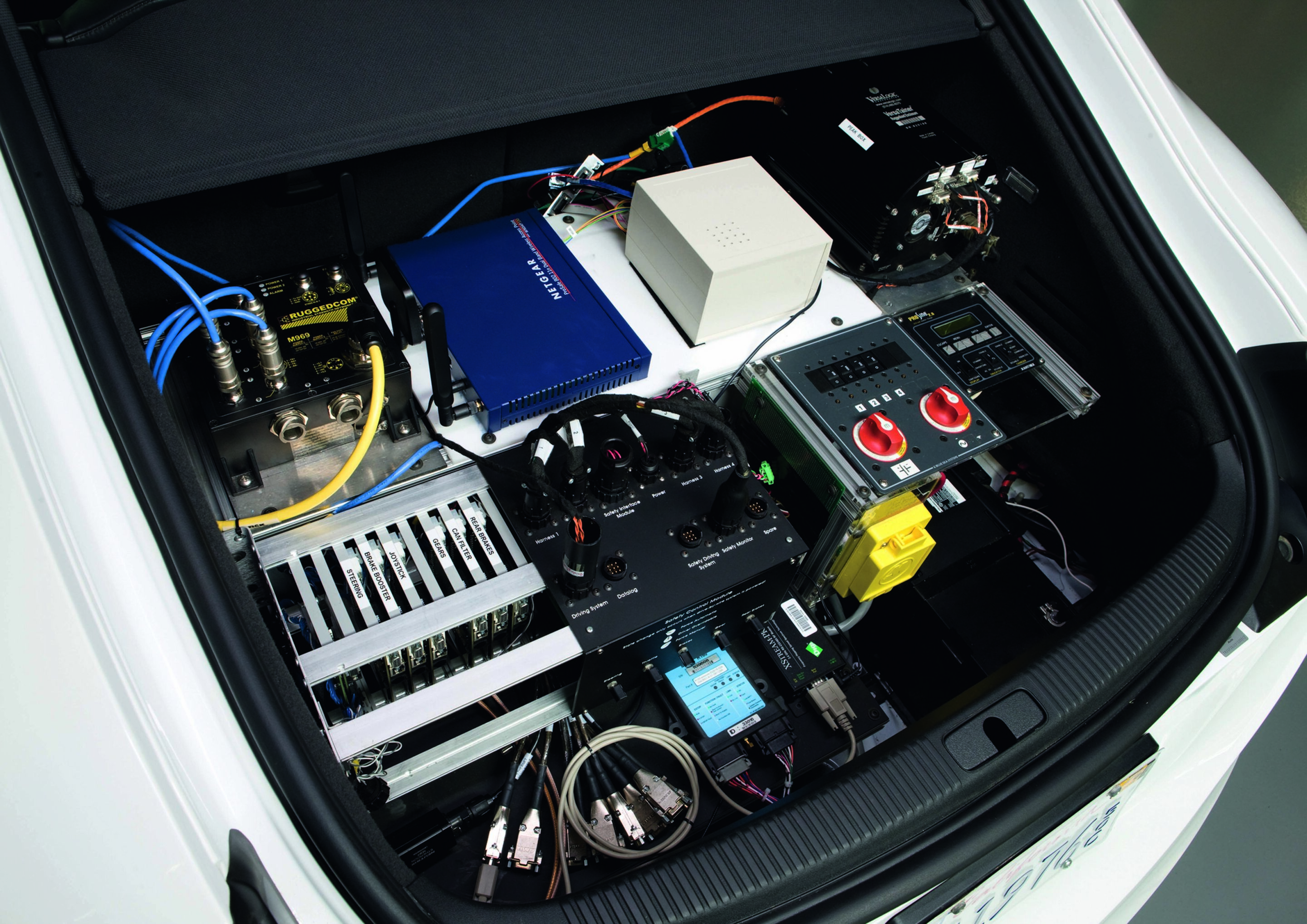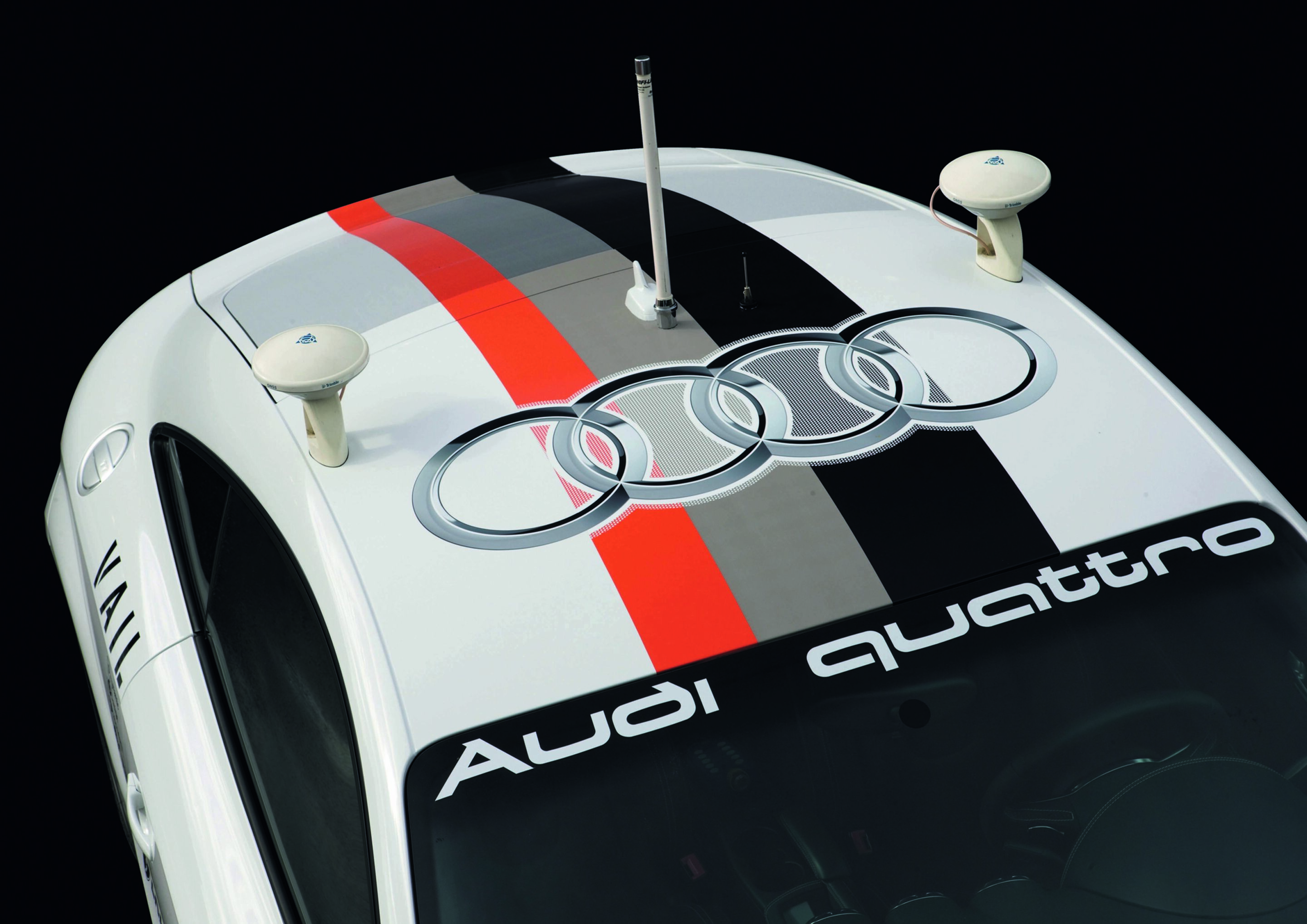Audi TTS Pikes Peak (2009)
Autonomous Audi TTS with new exterior design on Pikes Peak
Audi is launching a new design for the Audi TTS Pikes Peak before the autonomous car completes crucial high-speed test runs up Pikes Peak in Colorado this fall.
With the changed appearance, the autonomous Audi TTS Pikes Peak is now squarely aligned with Audi cars that made motorsports history over 20 years ago in the Pikes Peak Hill Climb and other rally racing events.
The new emphasis for the project also includes quattro technology, which has not only played an instrumental role in Audi racing successes, but also serves as an example of the progressive engineering found in Audi models and is integral to the handling of the Audi TTS research car. This year marks the 30th anniversary of quattro.
The challenge and heritage of Pikes Peak
The partners in developing this technology – the Stanford University Dynamic Design Lab (DDL), the Electronics Research Lab (ERL) for the Volkswagen Group in Palo Alto and Oracle Corp. – chose the part-pavement, part-gravel route of the storied Pikes Peak race to prove the project’s capabilities.
This project uses electronics that will help drivers steer their way out of dangerous situations. First programs have to be written that can replicate the quick decisions and rapid maneuvers of the best rally racers under the most difficult road conditions.
The connection with rally racing provided another key inspiration to the project team. Many of the leading automotive technologies that we see in an Audi today evolved out of motorsports. This is because racing pushes emerging technologies to the limits before they can be adopted more broadly.
How the Audi TTS Pikes Peak works
The autonomous Audi TTS Pikes Peak is based on the production version of the Audi TTS. Audi engineers chose the TTS because its technical systems, such as a drive-by-wire throttle and a semi-automatic DSG gearbox, were a good fit with the electronics that allow the car to drive without human input.
The computing hardware added to the TTS research car isn’t significantly more elaborate than what can be found in a standard laptop. The car currently uses two computers in its trunk – one running safety critical algorithms using Oracle’s Real Time Java (Java RTS). The other runs vehicle dynamics algorithms. The two algorithms are what enable the TTS to drive at the limits of handling on a variety of surfaces, at various speeds and in varying conditions.
The differential GPS system is capable of keeping the TTS within two centimeters of the center line of a normal course; researchers are planning on a one-meter margin on Pikes Peak due to the extreme conditions.
Design that links the past and the future
The design selected pays homage to the past, while conveying the leading-edge technology that defines the TTS research car. Designers decided to give the rally car themes from the 1980s a forward-looking twist.
The original rally cars, for example, didn’t feature a large four rings logo on their roofs. The designers used that design cue from modern Audi DTM racing cars.
Although the Pikes Peak race cars were an important source of inspiration, very different technology was used in those cars overall. The designers therefore decided to use more modern graphics elements that were heritage-inspired.
Planned timeline for the Audi TTS Pikes Peak
The highlight of the months ahead for the autonomous Audi TTS is the planned high-speed testing on Pikes Peak in the fall. During testing the Pikes Peak course would be divided into segments, which the TTS research car would drive at progressively increasing speeds. Certification of the testing will be done by an independent motorsports organization.
Later in the fall, weather permitting, the autonomous Audi TTS Pikes Peak plans to set a new land speed record at the El Mirage Lake dry-lake bed in southern California or another nearby location. Officials from the Guinness Book would certify whether the TTS can establish a record in the new category of fastest speed in an autonomous vehicle.
